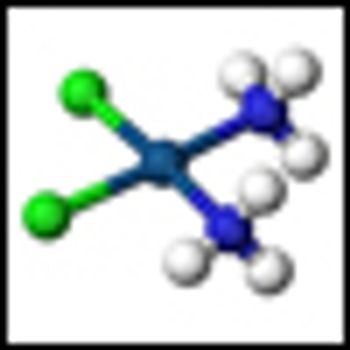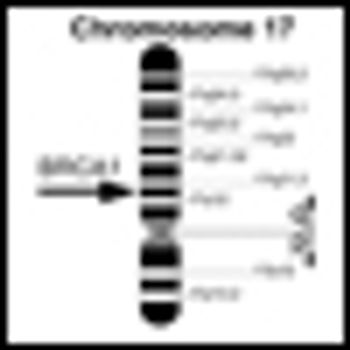
Researchers have identified a marker of DNA damage that may be able to predict a patient’s response to platinum-based chemotherapy agents such as cisplatin and carboplatin.

Your AI-Trained Oncology Knowledge Connection!


Researchers have identified a marker of DNA damage that may be able to predict a patient’s response to platinum-based chemotherapy agents such as cisplatin and carboplatin.

Cancer Network interviews two prominent ovarian cancer researchers from both sides of the Atlantic on the role of PARP inhibitors and the challenges of developing ovarian cancer therapies.

Following a large survey of more than 22,000 US women, researchers from H. Lee Moffitt Cancer Center, in Tampa, Florida, have concluded that a significant proportion of female cancer survivors have poor health behaviors, compared with women who have not had cancer.

This article reviews the trials that have been conducted with PARP inhibitors in epithelial ovarian cancer, fallopian tube cancer, and primary peritoneal cancer, and places the impact of those results in the larger context of PARP inhibitor development.

Four publications on cancer treatment during pregnancy were published last week in the journal Lancet, serving as new treatment guidelines for chemotherapy and surgery in pregnant patients with solid tumors and hematologic malignancies.

The development of poly(ADP-ribose) polymerase (PARP) inhibitors as a new class of anticancer agents has created a tremendous amount of hope in the ovarian cancer community, especially in the high-risk, difficult-to-screen, hereditary ovarian cancer population.

Ovarian cancers account for more than 50% of gynecologic cancer deaths. This is attributable to the late stage of the disease at diagnosis.

Tanner et al provide a concise review of lung cancer screening, including discussion of past failed attempts, the success of the National Lung Screening Trial (NLST), and promising new avenues for improving on the NLST results.

A new study has made a step forward toward better characterization of sporadic ovarian tumors by identifying their DNA repair protein expression profile.

The past year in oncology was highlighted by the continuation of breakthroughs in targeted therapies-with new treatments receiving US Food and Drug Administration (FDA) approval for non–small-cell lung cancer (NSCLC), lymphoma, and melanoma.

Coffee is emerging as a protective agent against a number of diseases, including cancer. A study published last week shows that women who drank more than four cups of coffee per day cut their risk of endometrial cancer by 25% compared with those who drank less than one cup per day.

The US Food and Drug Administration announced today that it has revoked the approval of bevacizumab for breast cancer due to the potentially life-threatening side effects associated with the treatment. It was approved for metastatic breast cancer in February 2008, but data later showed that along with an increase in side effects, there was no increase in overall survival.

Breast and ovarian cancer patients with limited tumor burden and minimal prior chemotherapy appear to have benefited from a novel vaccine.

In September 2011, the US Food and Drug Administration (FDA) approved marketing of the HE4 Test (Fujirebio Diagnostics, Malvern, Pennsylvania) along with the CA-125 test in the Risk of Ovarian Malignancy Algorithm, called ROMA, to determine the likelihood of finding malignancy at surgery in premenopausal or postmenopausal women presenting with an ovarian adnexal mass.

Counseling women at high risk for ovarian and uterine cancer is a complex process, from genetic diagnosisto the management of at-risk women. Rimes andcolleagues have presented these challenging issues, andsuggested ways to manage them, very well.

Patient education and counseling are essential in women at increased risk for ovarian and endometrial cancer. Women must be educated regarding the signs, symptoms, and risks associated with these cancers.

The aim of this article is to review the preclinical data and rationale for PARP inhibitor use in the aforementioned settings, as well as the current status of the clinical development of these agents in the treatment of breast cancer, along with future directions for research in this field.

The mining of whole genomes from 656 Icelanders with ovarian cancer and the comparison of these genomes to 41,675 control genotyped Icelanders has led to the identification of 16 million sequence variants that were tested for their association to ovarian cancer, one of the deadliest forms of cancer among women.

The opening chapters in the investigation of poly(adenosine diphosphate [ADP]–ribose) polymerase (PARP) inhibitors as cancer therapeutics have been interpreted by some as a quantum leap forward in targeted and personalized medicine and by others as another example of disappointment following a flurry of promising preclinical and early clinical trials based on elegant biology.

Women with high-grade serous ovarian cancer who also harbor a BRCA2, but not a BRCA1 mutation tend to have a better chemotherapy response and overall survival compared with those patients who are BRCA wild type.

Dr. Josep Tabernero of the Vall D'Hebron University Hospital in Barcelona presented the positive results of the VELOUR study on Sunday September 25, including the newly presented pre-specified subgroup analysis. The primary endpoint results had been reported at the ESMO/WCGC meeting earlier this year.

To improve staging, debulking, and prognosis in cytoreductive surgery, researchers in the Netherlands and Germany have developed a fluorescence imaging technique to visualize ovarian tumors.

Highlight of the Importance of Translational Medicine in Ovarian Cancer

In spite of screening recommendations that now begin only at 50 years of age, breast cancer is often diagnosed in women under the age of 40, and there are specific challenges to management of the disease in this younger population.

A superior overall survival with pegylated liposomal doxorubicin (PLD, Doxil) given with trabectedin (T) compared to PLD monotherapy has been demonstrated for advanced, relapsed ovarian cancer.